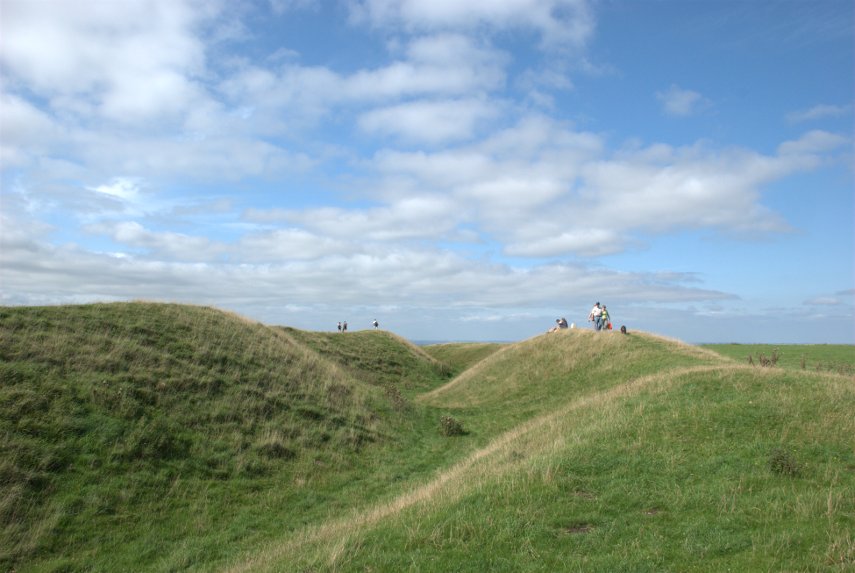
 DoneThat
DoneThat
White Horse Hill, Uffington, Oxfordshire, England


Dragon Hill, Uffington, Oxfordshire.
The small hill below with the flat top is known as Dragon Hill where St. George is supposed to have slain the dragon, its blood spilling on the hilltop and leaving forever a bare white patch where no grass can grow. The two cars on the road give some idea of scale.
One might conclude, because of its shape, that it was man-made but it is a natural formation although with an articicially flat top.
| Comment |

Uffington Castle, White Horse Hill, Oxfordshire.
Uffington Castle is an impressive Iron Age hill fort, once protected by timber walls on top of the surviving banks and ditches, and faced with sarcen stones. It is likely that the tribe who created the White Horse once lived within this hill fort.
The outer bank is on the right and the inner platform of the fort on the left with the ditch in between. The visible figures give the scale.
| Comment |

About a half mile south of the car park and skirting the edge of Uffington Castle is the Ridgeway, an ancient long distance footpath that runs for 85 miles between Avebury and Ivinghoe Beacon in the Chiltern Hills. This is the same path which we took from White Horse Hill (on the horizon) to Wayland's Smithy; an ancient burial chamber next to the Ridgeway. On the horizon between the tree in the near distance on the right and the low hill (White Horse Hill) in the far distance to the left is a small white patch. That is the continuation of this path passing Uffington Castle.
| Comment |

About a mile and a half walk from White Horse Hill car park along the Ridgeway is Wayland's Smithy; one of the most impressive and atmospheric Neolithic burial chambers in Britain. Somehow this ancient grave became associated with Wayland, the Saxon god of metalworking, from whom it takes its name.
| Comment | More of Wayland's Smithy |